LEGO Milky Way: A Cosmic Journey in Bricks and Art
Written on
Chapter 1: An Introduction to the LEGO Milky Way
The LEGO Milky Way set has become a topic of debate among enthusiasts; you will either find it captivating or a chore. This divide seems to disappear for those interested in STEM subjects, where the choice is almost obligatory…
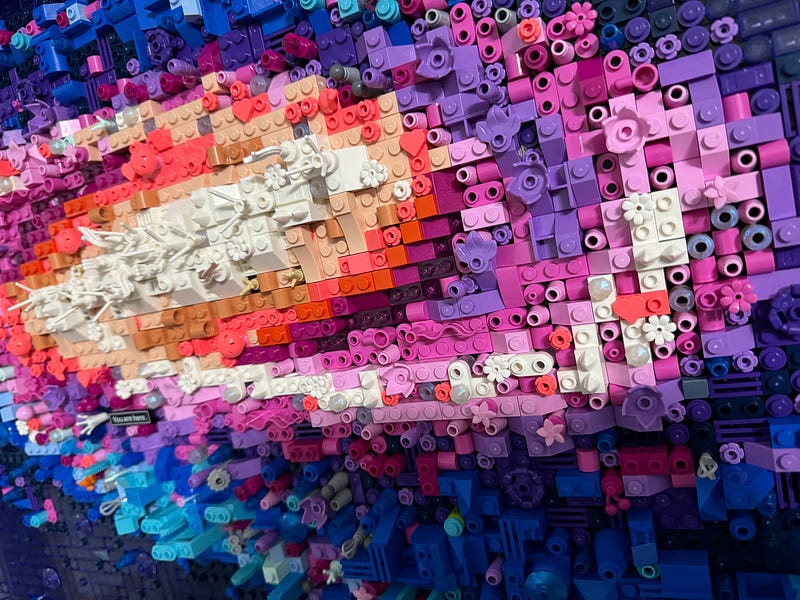
Zooming into the Milky Way. Photo by author.
Upon visiting the LEGO store, a staff member remarked, “That looks like a remarkably tedious set to construct,” adding humorously, “and by the way, you’re the first person to purchase it.” He was referring to the Milky Way LEGO set, which debuted as part of the ART theme in May 2024. With a grin reminiscent of Barney Stinson, I replied, “Challenge accepted!” It’s always challenging to deter me from acquiring a LEGO ART set, and this was no exception. However, I must confess that once I unsealed the box, I understood that reviewing it fairly would be a challenge since I was already enamored.
Why focus on the Milky Way? The LEGO Group appears to have made a significant return to their Space theme in 2024. This isn't merely a singular theme; it encompasses various other themes, including LEGO City, LEGO Friends, LEGO Technic, LEGO Icons, LEGO Creator, LEGO Dreamzzz, LEGO Duplo, LEGO Classic, an entire minifig series, and yes, even LEGO ART. This broad integration is quite rare; I can't recall LEGO ever undertaking such an expansive approach before. Fans worldwide were taken aback, but the response has been overwhelmingly positive, particularly regarding these Space-themed sets.
Yet, the Milky Way presents a unique challenge. While rockets and spaceships are universally adored, and the idea of constructing bases on imaginary planets for space cats and aliens is appealing, convincing someone to purchase a brick-built version of a galaxy is considerably more complex. While I could speculate endlessly about LEGO's newfound focus on Space—perhaps inspired by current global events and a renewed interest in space exploration—I'll refrain from spreading unverified theories. Instead, I’ll share why I found this set to be intriguing: it’s visually striking, distinct, wall-mountable, and aligns with my fascination for outer Space.
Is that a sufficient reason to invest $200 in a LEGO ART set? Maybe not. Is it enough motivation to spend seven hours stacking 3,091 tiny bricks? Again, perhaps not. But if you share my passion for Space and enjoy a challenge, this set quickly becomes essential.
Building Space with Bricks
Sounds paradoxical to create something from nothing, yet that’s essentially how Space came into existence, regardless of one's beliefs. Within that void, we find existence itself, including our place in the stunning Milky Way galaxy, and if you're a LEGO enthusiast, you can bring home—like I did—a substantial box filled with bricks that, after seven hours, transforms into a representation of the Milky Way.
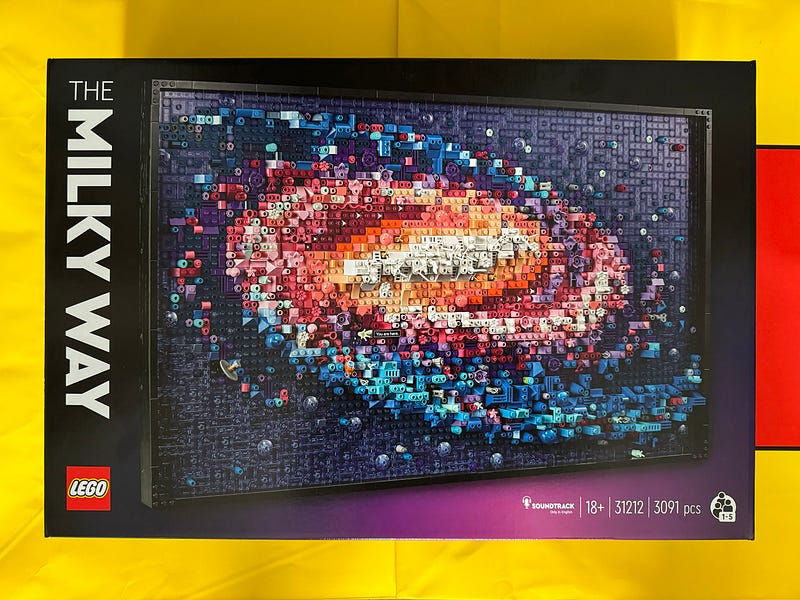
Retail box of the Milky Way set. Photo by author.
At this juncture, I feel compelled to take a moment to discuss the journey through this cosmic creation. The box art is striking, and it’s likely you’ll recognize it as a representation of Space, possibly even the Milky Way, without needing the bold letters on the packaging. However, those more familiar with astronomy may notice discrepancies in the depiction; it doesn’t quite resemble the images captured on clear nights with minimal light pollution. The shape appears elongated, resembling a linear arrangement of star clusters. So which is it? A spiral or a line? With a little contemplation, you may realize it’s both.
As inhabitants of the Milky Way, our perspective from Earth only allows us to see it as a line. Dr. Alastair Gunn from BBC Science elaborates in his article that there are indicators in the stars suggesting it is a disc-shaped spiral galaxy with a central bulge. Another galaxy, Andromeda, is on a collision course with the Milky Way, but for us, that “soon” is approximately 4 billion years away. It does provoke curiosity about how much Elon Musk comprehends about Space, given his focus on Mars rather than a distant galaxy on a collision trajectory. But I digress; tech entrepreneurs and their whimsical ideas!
Unique Elements of the Milky Way Set
One standout feature of this set is the diversity of pieces found within its 31 bags. While the colors may be logical, the types of bricks are surprising. You’ll come across hearts, cherries, and wire whips—unexpected elements for a galaxy representation!

Speaking of the multitude of pieces, the set includes six instruction manuals, making it ideal for group building sessions. The manual-to-bag distribution breaks down as follows:
- Manual 1: bags 1 through 3 — pieces for the entire frame.
- Manual 2: bags 4 through 8 — pieces for the first slice of the Milky Way.
- Manual 3: bags 9 through 14 — pieces for the second slice.
- Manual 4: bags 15 through 20 — pieces for the third slice.
- Manual 5: bags 21 through 26 — pieces for the fourth slice.
- Manual 6: bags 27 through 31 — pieces for the final slice.
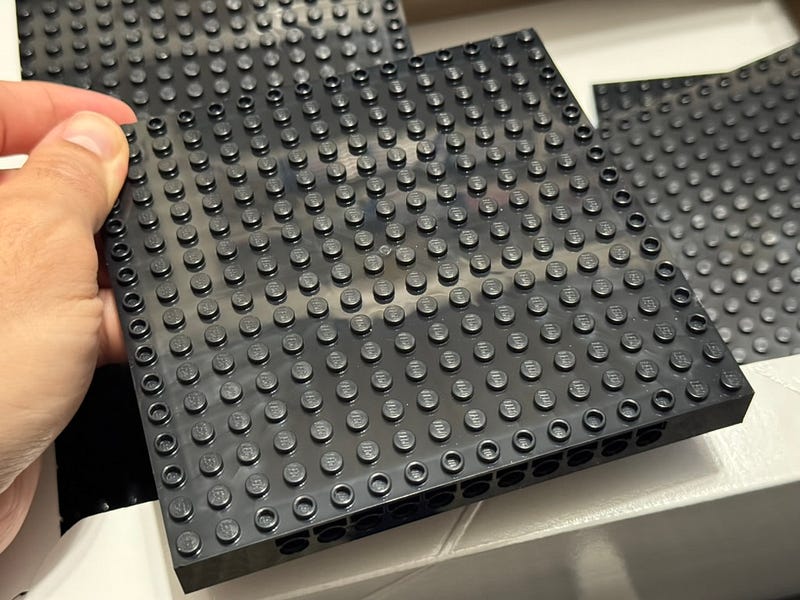
The five slices are constructed on 16×16 stud deep baseplates, known as “art plates,” common in LEGO ART sets. Each slice utilizes three baseplates connected via green and red Technic pins, and they are secured to the frame using short black Technic axles.
Interestingly, this set does not employ any SNOT (Studs Not On Top) techniques; it’s entirely about stacking bricks. In contrast to the World Map set, where rounded tiles were color-mapped, I found the Milky Way to be a more enjoyable building experience, despite its seemingly tedious nature. The unpredictability of various colors and piece combinations kept my attention engaged throughout the process.
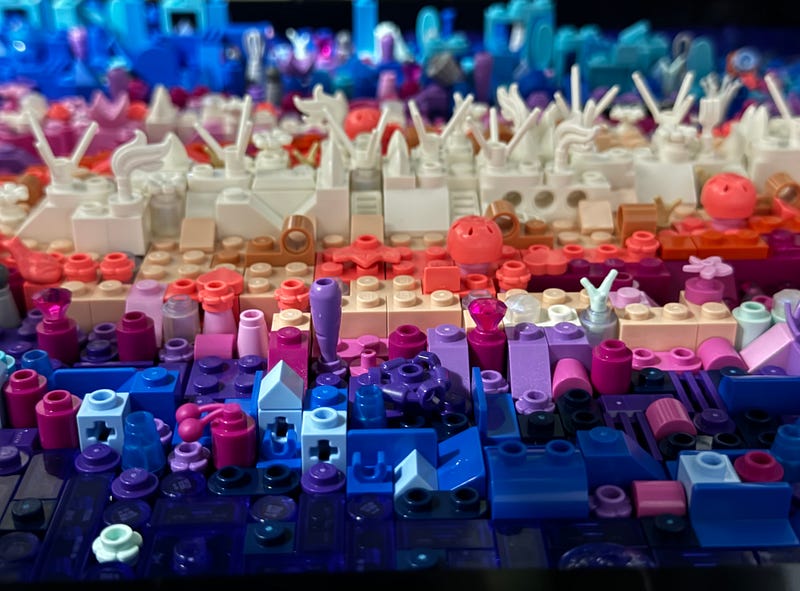
The color transitions, with a three-dimensional effect leading towards the bulge, are likely to be the first aspect that captures most people's attention. The void is filled with transparent purple tiles, a decision I appreciate as pure black would have resulted in a somewhat “too dark” final product. Additionally, acquiring so many transparent purple tiles in a set is a rarity, making this set an excellent value for parts.
Easter Eggs and Hidden Details
This set also includes a few Easter eggs, though not as many as those found in the Gotham City or Avengers Tower sets.
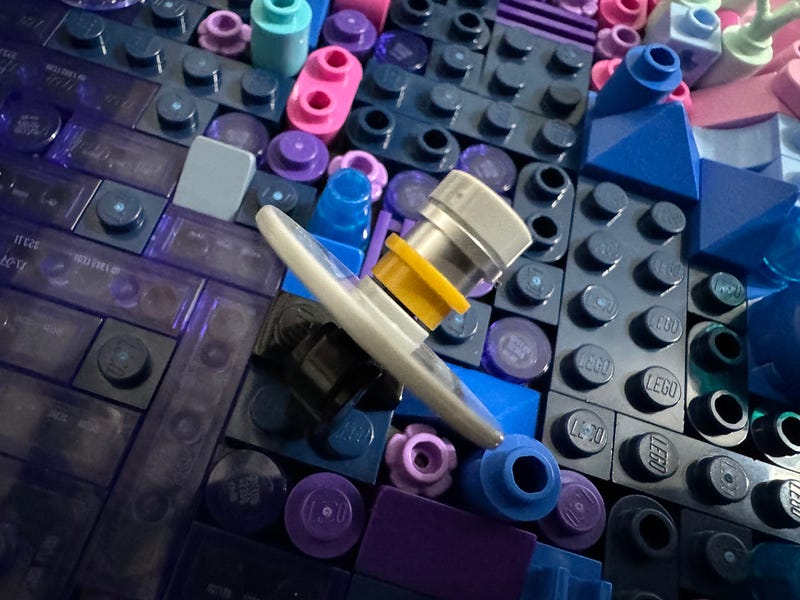
One intriguing detail is the brick-built Gaia space telescope, which was launched on my birthday in 2013 and signifies a notable achievement for the European Space Agency.
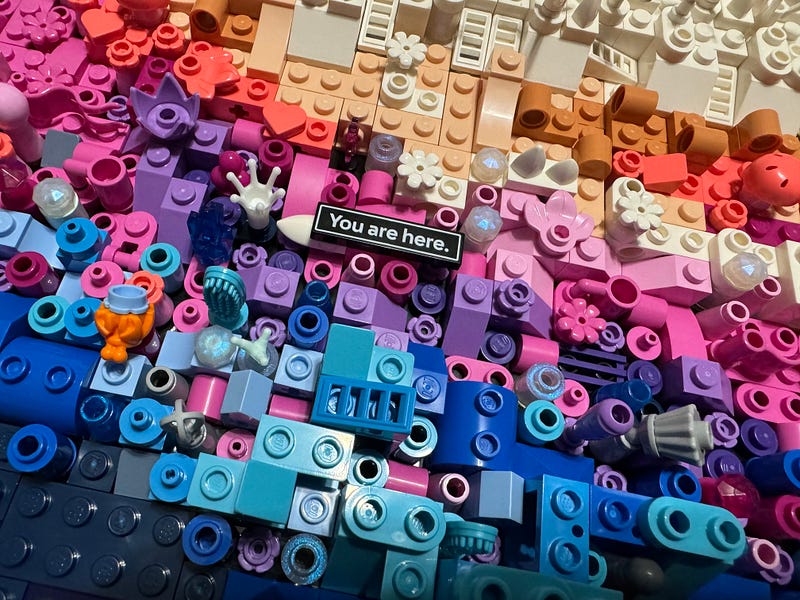
To signify Earth's position in the galaxy, a glow-in-the-dark piece is included, along with a printed tile stating “You are here.” Based on the LEGO model, we are positioned roughly halfway between the galactic center and the edge.
The cosmic detailing in the Milky Way LEGO set is truly remarkable. A fun Easter egg includes a small, round green printed brick that resembles an alien. While I’m uncertain of its meaning, I interpret it as a nod to the famous “I want to believe” poster from The X-Files. Surely, we can’t be the only intelligent beings in the universe!
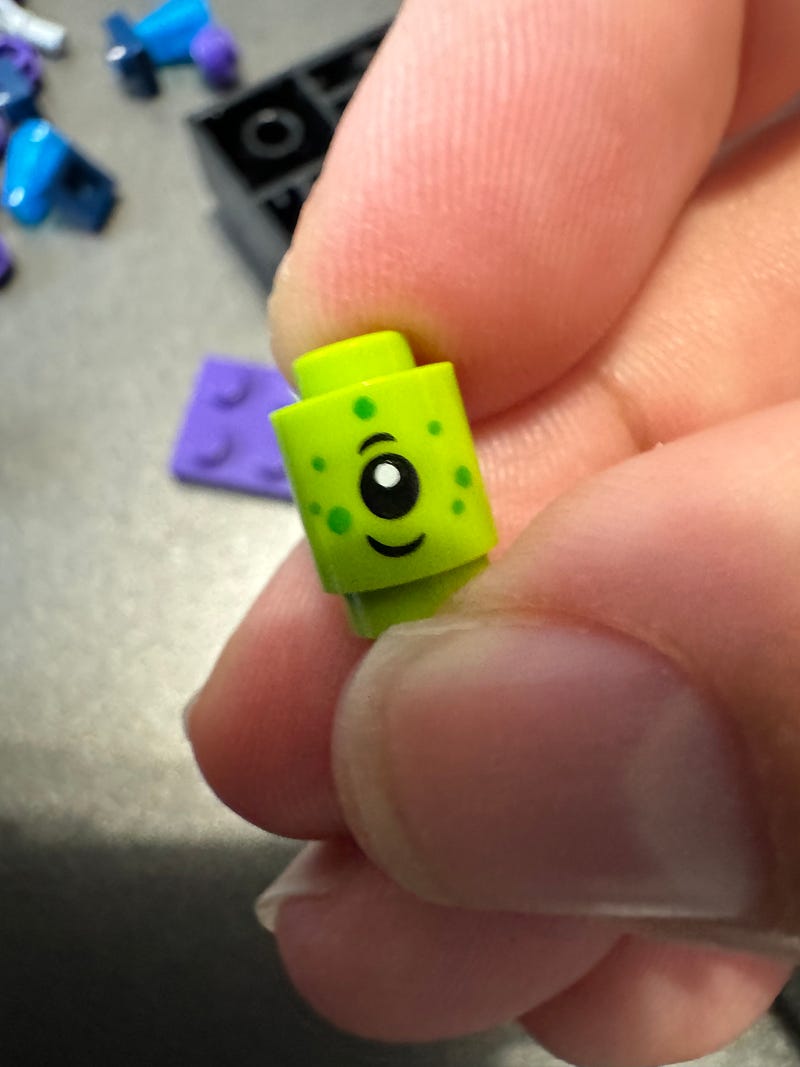
Another curious Easter egg consists of small binoculars scattered throughout the set. Initially puzzling, they serve as playful elements tossed into the void by the designer, alongside whimsical items like whisks!
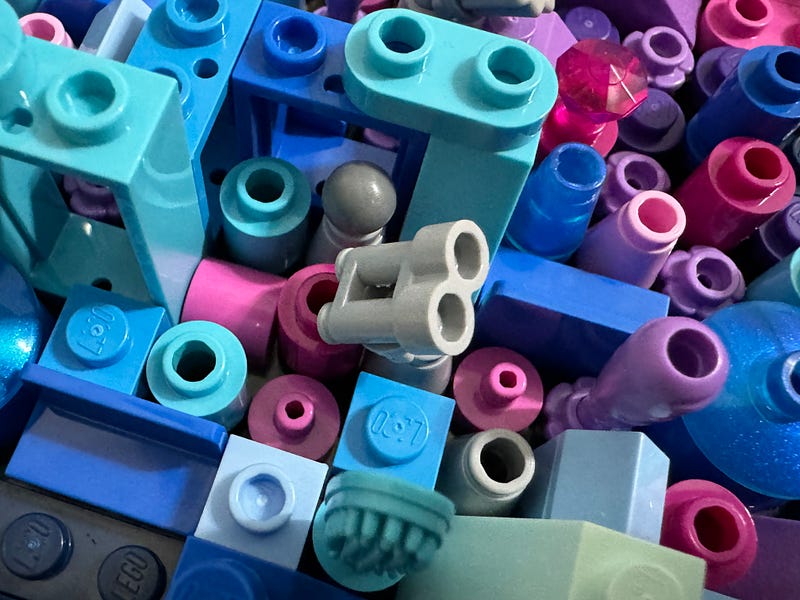
Next to the Crab Nebula (the orange piece) lies Trappist-1, a dwarf star about 40 light-years from the Sun, with seven Earth-sized exoplanets in orbit. Additionally, the blue crystal piece represents the Pleiades or Messier 45, the closest open star cluster to Earth.
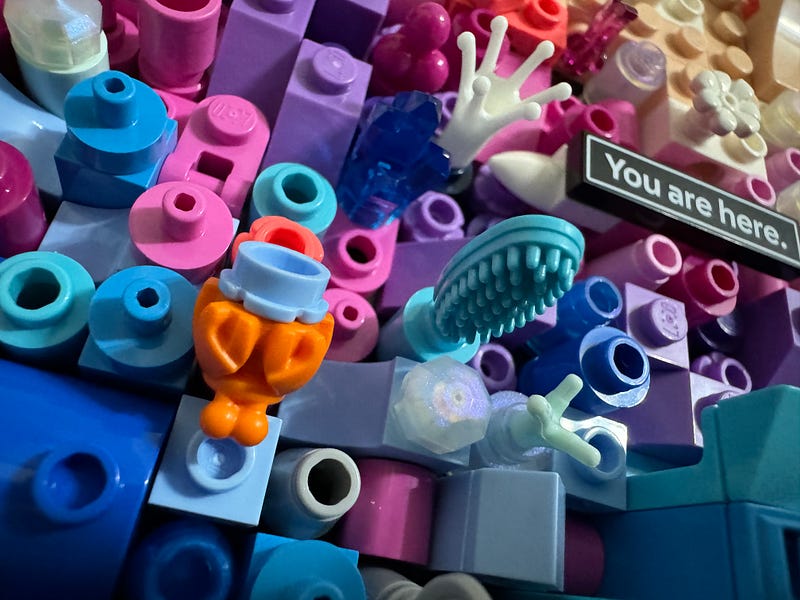
The disc-shaped speckled pieces symbolize globular clusters, and within the Milky Way, around 150 of these dense star clusters have already been detected.
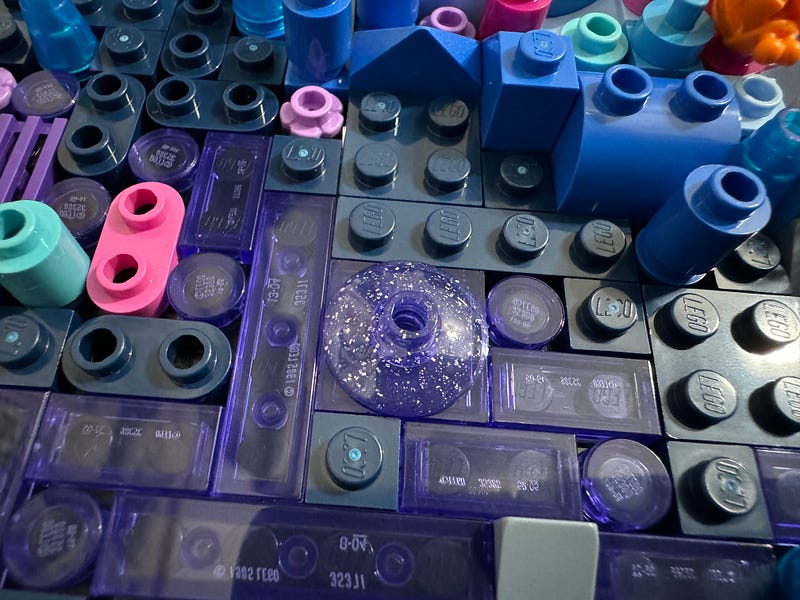
Lastly, the Pillars of Creation, discovered in the Eagle Nebula in 1920, are a mere 5,700 light-years away—an enticing destination for a weekend getaway, wouldn't you agree?
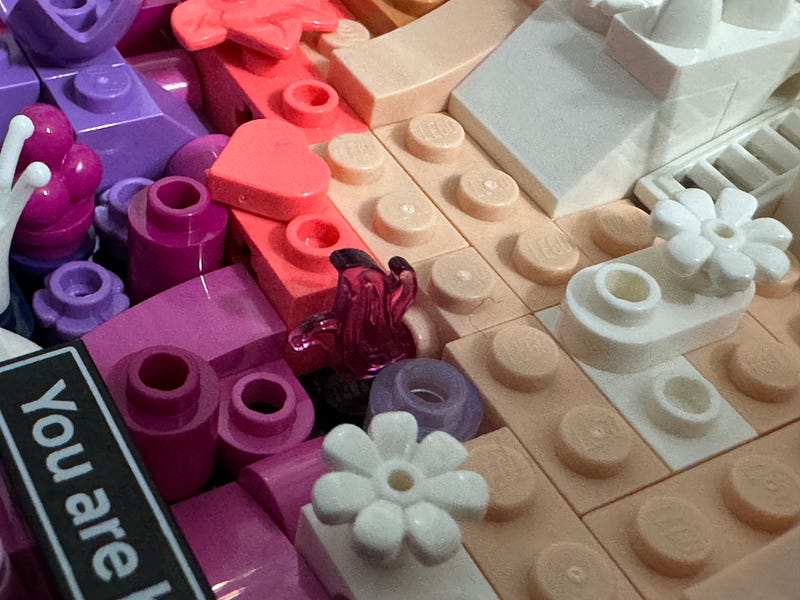
Seven Hours Later…
What might feel like an eternity for a novice builder culminates in the creation of a stunning piece of LEGO ART resembling the Milky Way. Although this set is not on the same scale as the actual Milky Way, it’s still sizable once assembled, measuring 40x65 cm. You’ll require ample wall space to display it. While it isn't overly heavy, two nails will be necessary to securely hang it, as the hooks on the back are approximately 25.5 cm apart near the top edge of the frame—make sure to drill your holes accurately!
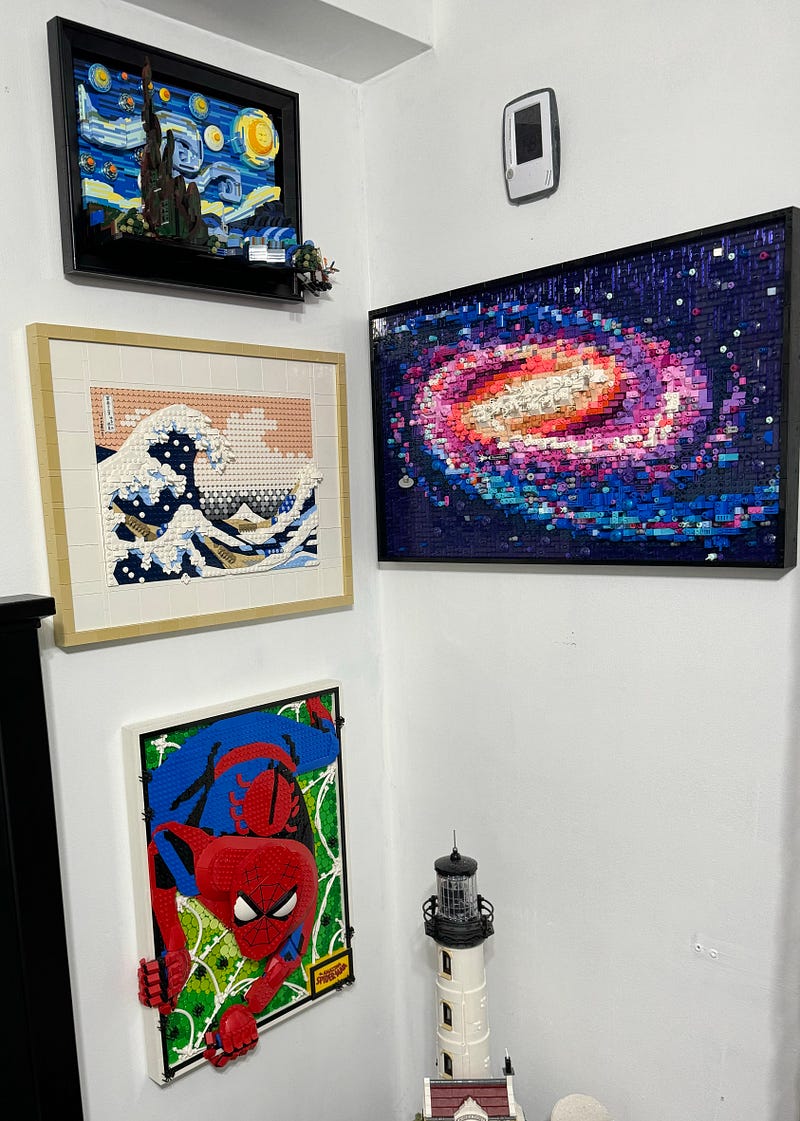
After contemplating several locations, I ultimately chose my burgeoning LEGO corner in the bedroom. It looks fantastic alongside my Hokusai, Van Gogh, and Amazing Spider-Man sets, with room for at least one more LEGO ART piece.
The Milky Way is undeniably one of the finest LEGO sets for introducing someone to STEM. It transcends being mere decor; it serves as an engaging educational tool. Pure brilliance!
For those interested in the captivating science behind the Milky Way, LEGO has created an inspiring one-hour podcast available for free (registration required). Even if you don’t purchase the set, it enhances your appreciation of the universe's vastness, our galaxy, art, and human achievements in space exploration.
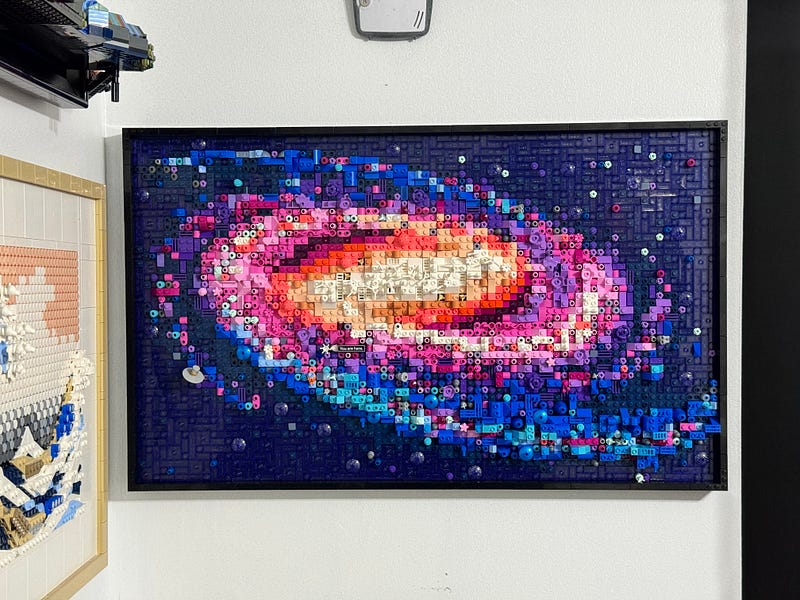
Attila Vago — A software engineer striving to enhance the world one line of code at a time. A lifelong geek, author, and advocate for web accessibility and LEGO, with a passion for craft beer. Read my Hello story here! Subscribe for more insights into LEGO, technology, coding, and accessibility, alongside my musings on various topics.
The first video offers a review of the LEGO Milky Way, showcasing its features and building experience.
The second video discusses the challenges and issues with the LEGO Milky Way set, providing insights into its design and functionality.